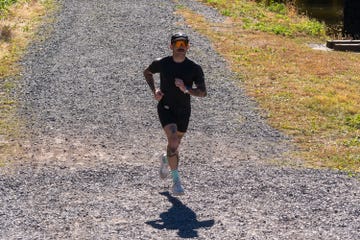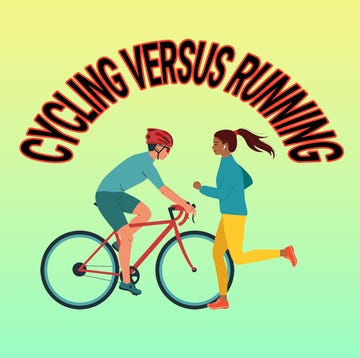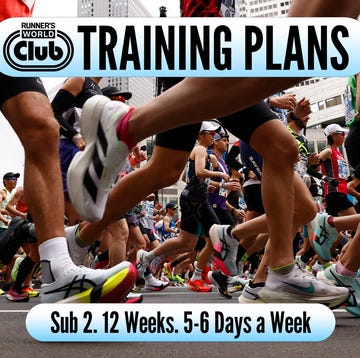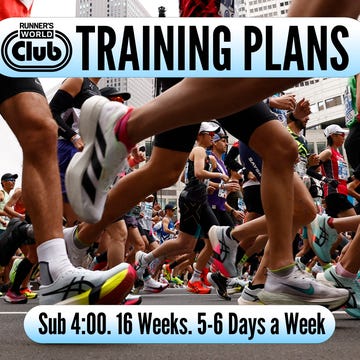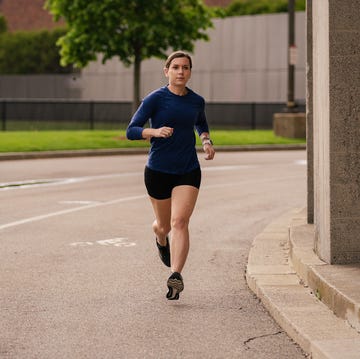It may sound like a vicar swearing, but Jeffing is an increasingly favoured way for runners to boost their efficiency and even, counterintuitively, go faster. This ‘Run-Walk-Run’ method, affectionately named after Jeff Galloway, the coach and author who pioneered the strategy in the mid-70’s and ran the 10,000m for the US at the 1972 Olympics, is now endorsed by everyone from Couch to 5K beginners to the giants of ultrarunning.
When Tom Evans won the 2025 UTMB – the flagship race of ultrarunning – in August, he credited his victory to his walking rather than his running. ‘My result here didn’t come from my strength in the running – it came from my hiking,’ he told iRunFar afterward. ‘In a race like the UTMB, if you can out-hike everyone, then you save a lot of energy and it’s easier to fuel… It makes life really easy, because if you are a bit tired, you can just hike.’
Galloway himself echoes this: ‘By alternating between running and walking, runners can go farther, recover faster and feel stronger during and after their workouts.’ However, your runner’s ego may still be resisting the idea. What if somebody sees you walking? If you’re still not convinced by the notion of Jeffing, here’s how it stacks up against plain running in a range of areas.
What everyone's reading
Performance
Logic dictates that alternating running with walking must be slower than just running, right? But this ain’t necessarily so over longer distances. Galloway claims that the potential gains involve going ‘an average of seven minutes faster in a 13.1-mile race when non-stop runners shift to the correct Run-Walk-Run ratio – and more than 13 minutes faster in the marathon’. This is because you’re adding some recovery into the run itself, possibly avoiding the extreme slowdown that can occur as a race nears its end. A 2016 study published in the Journal of Science and Medicine in Sport backs him up, finding that at a marathon distance, ‘although a combined run/walk strategy does not reduce the load on the cardiovascular system, it allows non-elite runners to achieve similar finish times with less (muscle) discomfort’.
However, another piece of research, published in the International Journal of Performance Analysis in Sport in 2020, concluded that it actually uses more energy to change speed frequently than to run at a steady pace. According to the researchers, ‘when runners alternated gaits, they paid a 6% energy tax while benefiting from only a very slight reduction in average perceived exertion’. The best way to see if Jeffing works for you is to just try it – you could be surprised, particularly over longer, hillier runs.
Injury risk
If your body is prone to injury, Jeffing has to be the victor over running. By reducing the impact forces of your feet hitting the ground, you’re also reducing fatigue in your muscles, making them less vulnerable to overuse injuries. Runners often incur injuries when they increase their training load too quickly. ‘By pacing conservatively and by inserting walk breaks early and often, you will gain a great deal of control over the fatigue process,’ notes Galloway, who says that he hasn’t been injured since 1978. ‘You’ll empower the muscles to maintain resiliency and capacity.’
It seems so obvious that it barely needs a scientific study, but here’s one from the Clinical Journal of Sport Medicine all the same. Examining over 5,000 men and women over a period of a few years, it found that ‘there was a significantly lower risk of injury for walkers compared with runners in young and older men and a non-significantly lower risk among young and older women’.
Mental strength
Which technique you prefer here will depend upon what you want to get from your run.
For starters, the fabled ‘runner’s high’ is more likely to materialise when you’re pushing a bit harder. A study in 2008 scanned 10 athletes twice – once at rest and once after two hours of endurance running. ‘The level of euphoria was significantly increased after running,’ it found. But running to race also has psychological downsides of stress and anxiety (has there been a major scientific study of toilet queues before big races, yet?) and the mental crash that can come when a run hasn’t gone as well as hoped.
Galloway proposes that using Jeffing will ‘allow for endorphins to collect during each walk break’ – and for those who feel like running is too difficult, it can provide ‘running joy to non-stop runners who had given up’. Jeffing offers mental breaks during a run, allowing you to split a longer journey into more manageable sections. You can mentally regroup during the walk and potentially increase your motivation to keep going for longer.
Longevity
This is where runners and Jeffers can both be smug next to those who do neither.
A report in Progress in Cardiovascular Diseases, published in 2017, cited several large studies which found that ‘runners have 30-45% lower risk of all-cause mortality.’ A 15-year study in the Journal of the American College of Cardiology als0 found that running can increase life expectancy by three years and that even running as little as five to 10 minutes a day at slow speeds ‘is associated with markedly reduced risks of death from all causes and cardiovascular disease’. This would suggest that the less energetic Jeffing technique is just as likely to increase your lifespan. In fact, it could even be preferable, because it’s likely to enable you to keep running even further into your (inevitable) old age.
More positives come from another study conducted by the Stamford University School of Medicine, which followed over 400 older runners and non-runners over 21 years. It found that the runners less likely to have died during the research period and that they had ‘reduced disability’, which meant that they were capable of looking after themselves for longer. So, if it keeps the running injuries at bay and allows you to keep doing it further into later life, it looks like Jeffing is the winner here.



